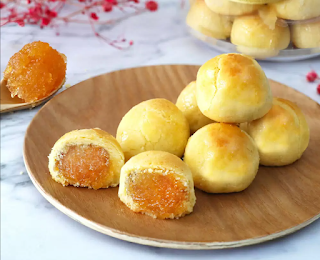Guide To Mooncake Festival
The Mid-Autumn Event, also known as the Moon Festival or Mooncake Festival, is China's second most important festival after Chinese New Year, with a 3,000-year tradition of kings worshipping the moon for good harvests.
The event occurs on the fifteenth day of the eighth lunar month in the Chinese lunisolar calendar, which corresponds to late September to early October in the Gregorian calendar. The Chinese believe that the moon is at its fullest and brightest on this day, which also happens to be harvest time in the middle of Autumn.
Lanterns of various sizes and shapes are carried and displayed as omens of good fortune and success. This time of year, mooncakes, a decadent pastry filled with sweet bean or lotus seed paste, are available.
The celebration was a time to honour the moon with food offerings after a successful rice and wheat harvest. Eating mooncakes and gazing at the moon, a symbol of peace and unity, is a tradition that is still practised today at outdoor gatherings of friends and family. It is common for government offices, banks, and schools to close for an extra day during the year of a solar eclipse in order to enjoy the extended celestial celebration.
The holiday celebrations revolve around the tradition of carrying brightly coloured lanterns. The availability of mass-produced plastic lanterns featuring internationally recognised characters such as Pikachu from Pokémon, Disney characters, Naruto, Angry Birds, Ben 10, Doraemon, SpongeBob SquarePants, and Hello Kitty has resulted in a decline in handcrafted lantern production in modern times.
Making and distributing Mooncakes are a long-standing tradition of the holiday. Another traditional food associated with the Mid-Autumn Festival is mooncakes. In Chinese culture, a round shape represents completion and reunion. Sharing and eating round mooncakes with family members during festival week symbolises the completeness and unity of families.
Mooncakes are traditionally prepared in various parts of China on the night of the Mid-Autumn Festival. The senior household member cut mooncakes into pieces and presented them to each family member, symbolising a family reunion. In modern times, the traditional practise of making mooncakes at home has given way to the more popular practise of distributing mooncakes to family members, but the concept of familial togetherness has remained constant.
Despite the fact that the majority of mooncakes have only a few centimetres in diameter, imperial cooks crammed designs like Chang'e, cassia trees, and the Moon-Palace into the mooncakes' surface. The number thirteen represents the thirteen months of a full Chinese lunar year, and one custom involves stacking thirteen mooncakes on top of one another to resemble a pagoda. The image of widespread mooncake production has survived into modern China. Now is the time to savour the best mooncake.



Comments
Post a Comment